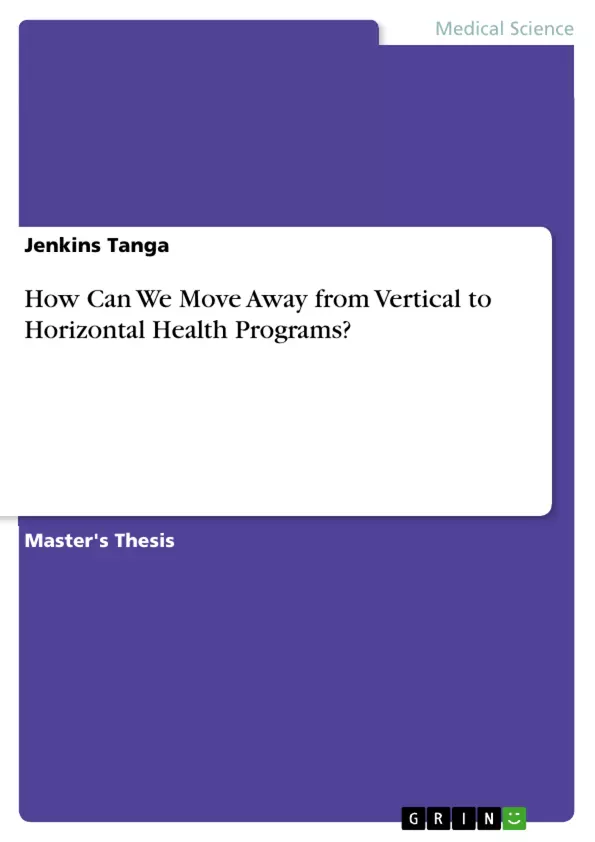This paper examines how governments and health organizations can successfully transit from vertical programming into a broad-based and inclusive community based Primary Health Care that responds to the needs of the local community.
Using HIV/AIDS in Uganda as a case study, this paper finds that though these programs are important in combating some of the biggest pandemics affecting the largest percentage of most populations in the developing world, enhancing the efficacy of vertical programs requires its integration into the more inclusive Primary Health Care system.
Inhaltsverzeichnis (Table of Contents)
- Abstract
- LIST OF ACRONYMNS
- CHAPTER ONE:
- Introduction and Background
- Politics of AIDS
- CHAPTER TWO:
- Methodology
- CHAPTER THREE:
- Results and Discussion
- PMTCT
- HCT
- ART
- CHAPTER FOUR:
- Conclusion
- Bibliography
Zielsetzung und Themenschwerpunkte (Objectives and Key Themes)
This paper examines the transition from vertical health programming to a more inclusive and community-based Primary Health Care system, using HIV/AIDS in Uganda as a case study. It aims to analyze the challenges and opportunities of integrating vertical programs into existing healthcare systems, ultimately contributing to a more effective and sustainable approach to addressing health issues in developing countries.
- The impact of vertical health programs on national health systems in resource-poor countries
- The need for a shift towards a more integrated and inclusive approach to healthcare delivery
- The challenges of integrating vertical programs into Primary Health Care
- The role of community participation in achieving sustainable healthcare solutions
- The importance of addressing the political and social determinants of health
Zusammenfassung der Kapitel (Chapter Summaries)
Chapter One provides an introduction and background on the impact of HIV/AIDS on sub-Saharan Africa and the emergence of vertical programs. It explores the historical context of the epidemic and discusses the limitations and unintended consequences of vertical programming. Chapter Two outlines the methodology used in the study, while Chapter Three presents the results and discussion, focusing on the efficacy of different approaches to HIV/AIDS prevention and treatment in Uganda. The chapter examines the effectiveness of PMTCT, HCT, and ART programs in the context of the Ugandan healthcare system. Chapter Four presents the conclusion, drawing upon the findings of the study to provide recommendations for a more effective and integrated approach to healthcare delivery in developing countries.
Schlüsselwörter (Keywords)
The paper focuses on the key concepts of vertical programming, Primary Health Care, HIV/AIDS, community participation, and sustainable healthcare delivery in the context of developing countries. It explores the complexities of integrating vertical programs into existing healthcare systems and the challenges of achieving effective and equitable healthcare access for all.
- Quote paper
- Jenkins Tanga (Author), 2016, How Can We Move Away from Vertical to Horizontal Health Programs?, Munich, GRIN Verlag, https://www.grin.com/document/354544



